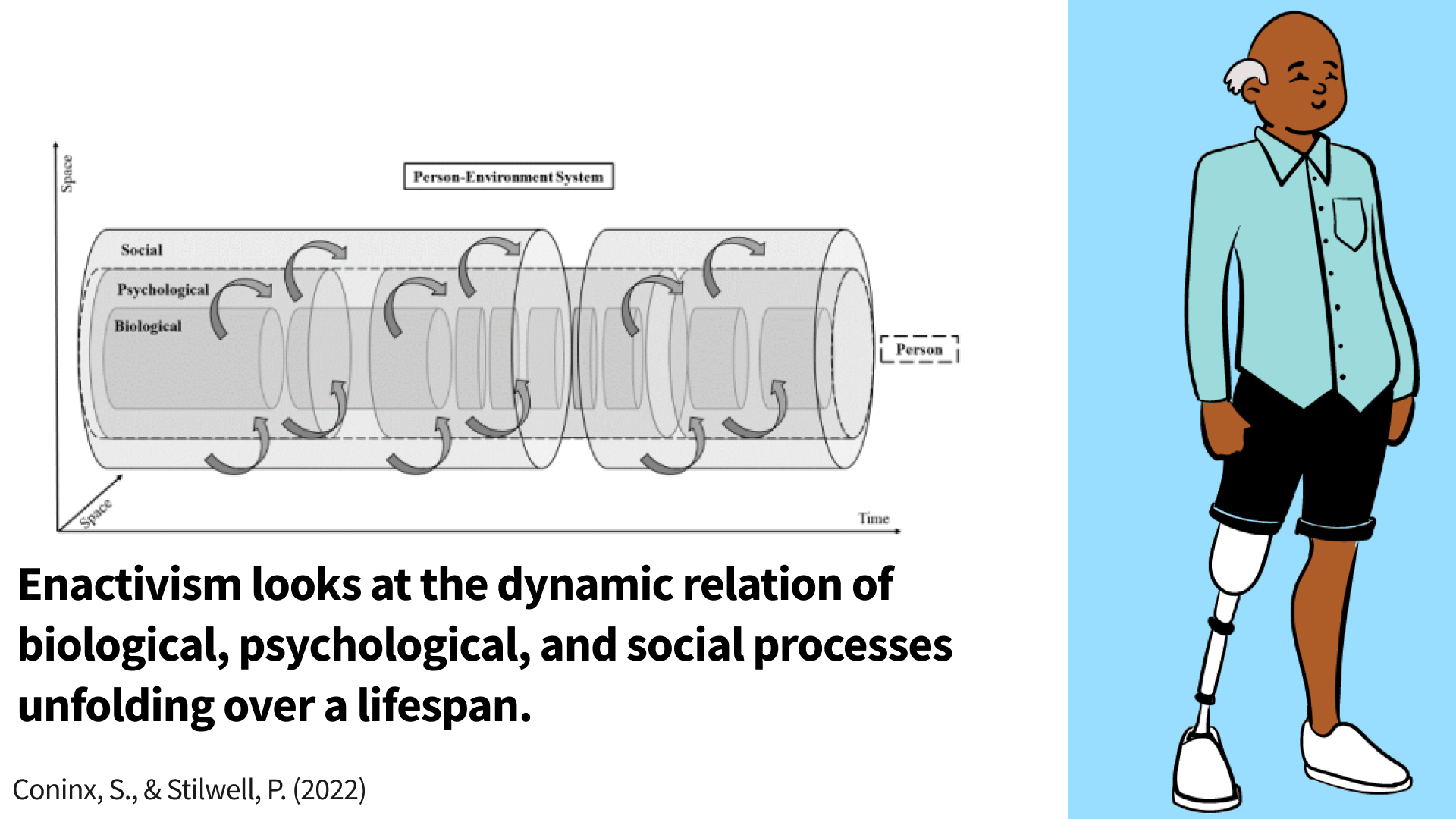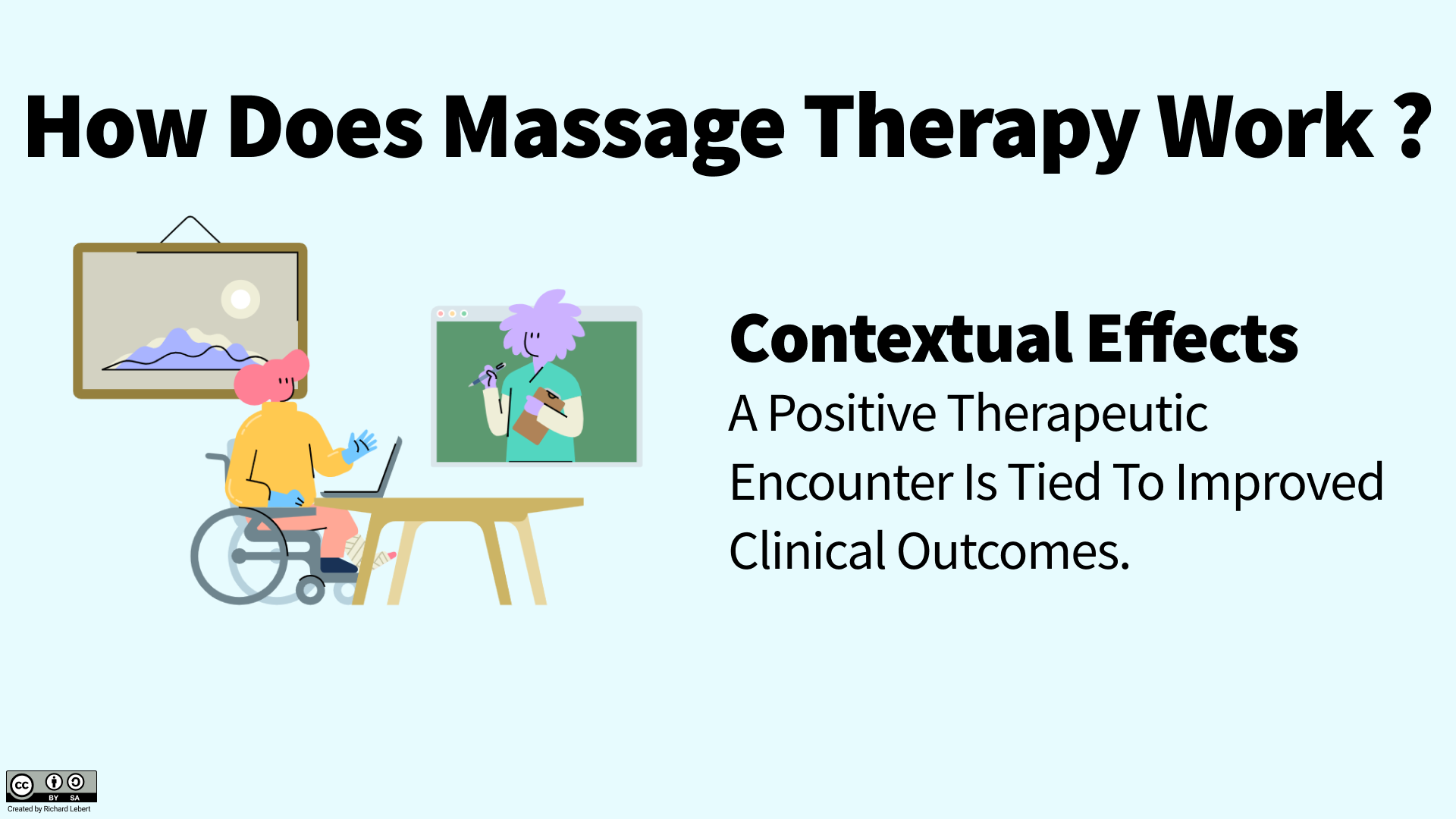An Evidence-Based Approach to Massage Therapy
/An Enactive-Biopsychosocial Approach to Massage Therapy
For thousands of years, people with illnesses and disabilities were treated with various methods of massage, the history of which varies from country to country. Each treatment approach in massage therapy may vary and despite being called different names, most of these techniques have similar effects and outcomes. What is lacking is a unifying theoretical foundation. Having an evidence-based explanation of why massage therapy works can help develop a cohesive message of this conservative approach and the value that massage therapists deliver.
Based on available evidence the best way to describe the effects of massage therapy is not in one single response, but as a collection of interconnected responses. An enactive-biopsychosocial approach has been proposed as a way to better understand the interconnected and multidirectional interaction between biological, psychological, and social factors (Cormack et al., 2022).
This approach (enactive-biopsychosocial approach) may be a useful reference when attempting to better understand the multidimensional benefits of massage therapy.
Enactivism may help contribute to a better understanding of pain and dysfunction. It is one way to look at the dynamic interactions between people and their environment and how biological, psychological, and social processes unfold over a lifespan (Coninx & Stilwell, 2022).
So, How Does Massage Therapy Work?
Massage therapy is a multisensory experience that exposes people to novel sensory input in an attempt to restore allostasis. In terms of clinical responses to massage therapy outcomes may be attributed to specific effects, contextual effects and non-specific effects (more on this below).
The total treatment effect includes specific effects of the treatment, contextual effects, and non-specific effects (Modified from Cashin et al., 2021).
1. Specific Effects
Specific Effects: Massage therapy can modulate neuro-immune processes correlated with disability and the experience of pain.
Affective Touch: Socially appropriate interpersonal touch has been shown to stimulate the release of neurochemicals (endogenous opioids and oxytocin) associated with relaxation and pain relief (Chen et al., 2020; Fotopoulou et al., 2022; McParlin et al., 2022; Meijer et al., 2022; Rapaport et al., 2012; Walker et al., 2017). In general, a reassuring therapeutic encounter, in which a patient is provided with compassionate touch, provides the patient with a safety message. This can result in reduced physiological and behavioural reactivity to stressors and improved mood/affect.
Neurological Factors: Therapeutic massage is processed by specialized sensory receptors located in cutaneous and subcutaneous structures. Specialized mechanoreceptors located in cutaneous and subcutaneous structures are what informs the body about the type of touch they are receiving, there are five major types of mechanoreceptors that massage therapists should be aware of:
Two of these are located in the superficial layers of the skin: Merkel cells and Meissner corpuscles.
Two receptors, Pacinian corpuscle and Ruffini endings, are found in the subcutaneous and deeper tissue layers.
The fifth type of mechanoreceptor are the recently discovered C-tactile fibers that play a specific role in transmitting the pleasurable properties of touch (they also play a role in affective touch mentioned prior).
Massage therapy is a form of peripheral somatosensory stimulation that can modulate the activity of neuro-immune (peripheral, cortical, subcortical) processes correlated with the experience of pain (Bialosky et al., 2018; Vigotsky & Bruhns, 2015; Wilson et al., 2021). Through a process of gently stretching muscles, neurovascular structures and investing fascia nociceptive processing associated with tissue damage (actual or perceived) is modifiable in such a way that the pain subsides. Preferential sites for stimulation are associated with areas rich in specialized sensory receptors such as Merkel cells, Meissner corpuscles (superficial layers of the skin), Pacinian corpuscles, Ruffini endings (joint capsules & subcutaneous tissue) and C-tactile fibers which play a role in the singling of affective aspects of human touch.
Mechanical Factors: There are several researchers conducting research on the effect of soft-tissue massage on cellular signaling and tissue remodeling (sometimes referred to as mechanotherapy).
Geoffrey Bove has conducted research examining the effect of modeled manual therapy on repetitive motion disorders and the development of fibrosis. One study published in The Journal of Neurological Sciences showed soft-tissue massage prevented the deposition of collagen and transforming growth factor beta-1 (TGF beta 1) in the nerves and connective tissues of the forearm (Bove et al., 2016). This was followed up by multiple studies showing that by attenuating the inflammatory response (with modeled massage) in the early stages of an injury, they were able to prevent the development of fibrogenic changes in forearm nerves, muscles, and tendons (Barbe et al., 2021; Bove et al., 2019). There is also additional research showing that peripheral nerves adapt to appropriate nerve-directed stretching. This improvement in nerve excursion has been shown to correlate with a decrease in pain and disability (Thoomes et al. 2021).
For more than a decade Esther Dupont-Versteegden and Timothy Butterfield have been studying mechanotherapy in both humans and animal models, their research lab has shown that soft-tissue massage can stimulate stromal cell populations to enhance ECM remodeling (Hettinger et al., 2022), enhance muscle anabolic signaling (Miller et al., 2018), stimulate satellite cell proliferation (Hunt et al., 2019), and promote immunomodulation (Waters-Banker et al., 2014). Additional research from Harvard Medical School showed that soft tissue massage may help flush inflammatory cells (cytokines and chemokines) from injured muscle tissue (Seo et al., 2021).
Furthermore, research demonstrated that massage therapy (effleurage in particular) has a modest effect on local circulation and perfusion both in the massaged limb and in the contralateral limb (Matsuda et al., 2022; Monteiro Rodrigues et al., 2020). Taken together this effect on cellular signaling and tissue remodeling (increase in satellite cell numbers and reduction in inflammatory signaling) may improve the body’s ability to respond to subsequent rehabilitation (Van Pelt et al., 2021).
2. Contextual Effects
Contextual Effects: A person-centered clinical experience enhances the natural healing capacity of the body.
It has long been known that the way a clinician presents both themselves and their treatment, is tied to health-related outcomes – this is known as the contextual factors of a therapeutic encounter (Rossettini et al., 2018). Creating an environment for healing involves providing a person-centered clinical experience that embraces contextual factors (patient’s beliefs and characteristics, practitioner’s beliefs and characteristics, patient-practitioner relationship, therapeutic setting/environment, treatment characteristics) and the natural healing capacity of the body (Ellingsen et al., 2020; Hafliðadóttir et al., 2021; Kaptchuk et al., 2020; Sherriff et al., 2022) In essence, behaviors and interactions with patients facilitate a relaxation response that will help to influence health-related outcomes; the magnitude of a response is influenced by expectation, learning processes, personality traits, and mindset (Rossettini et al., 2020).
“By definition, CFs (Contextual Factors) are physical, psychological and social elements that characterize the therapeutic encounter with the patient. CFs are actively interpreted by the patient and are capable of eliciting expectations, memories and emotions that in turn can influence the health-related outcome, producing placebo or nocebo effects.” – Rossettini et al., 2018
3. Non-Specific Effects
Non-Specific Effects: Musculoskeletal pain can resolve spontaneously.
The human body is a complex and adaptable network of overlapping systems. Often even without medical treatment people with musculoskeletal pain often achieve symptom resolution. That is why it is important to provide people with reassurance and facilitate an evidence-based understanding of treatment options and encourage the use of active approaches (exercise and physical activity) to help manage symptoms as their body is healing.
In Summary
In terms of clinical response to massage therapy, outcomes may be attributed to specific effects (affective touch, mechanical factors, and neurological factors), contextual effects (patient-therapist relationship, set and setting), and non-specific effects (natural history, regression toward the mean). This evidence-based explanation of why massage therapy works can help develop a cohesive message of this conservative approach and the value that massage therapists deliver.
Based on available evidence the best way to describe the effects of massage therapy is as a collection of interconnected responses.







